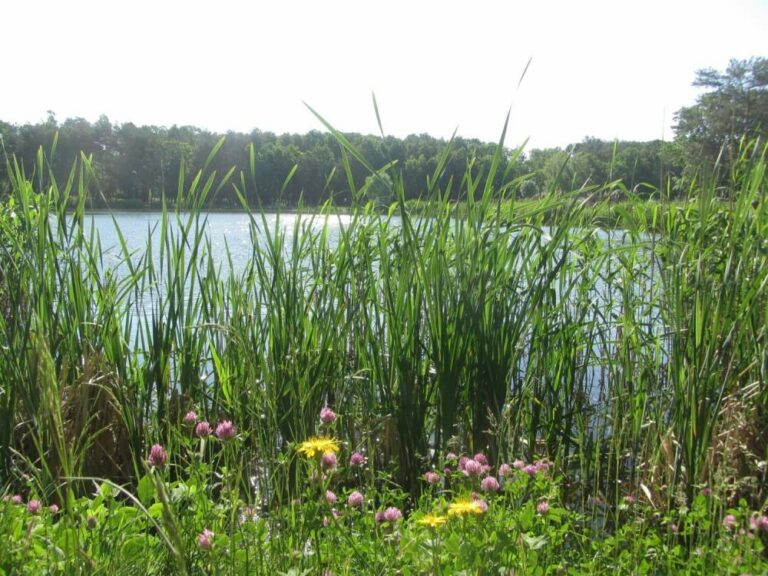Exploring the World of the National Botanic Garden of Wales
Do you love nature, plants, and horticulture? Are you a fan of botanical gardens? If yes, you should explore the fascinating world of the National Botanic Garden of Wales. Established in 2000, it is the United Kingdom’s first national botanic Garden and guarantees an unforgettable experience for locals and visitors.
From its spectacular Victorian-style Great Glasshouse to its sculptures and water features, the National Botanic Garden of Wales offers something for everyone. Here you will find gardens devoted to maps, oaks, medicinal plants, and more! You’ll explore its unique design with mazes, pathways, and a hidden valley. Plus, you can learn about the latest conservation projects at this exquisite Garden. All in all, there’s plenty to discover at this unique botanical Garden. In this article, I will dive deeper into the history and work of The National Botanic Garden of Wales.
History of the National Botanic Garden of Wales
Located in the heart of Carmarthenshire, Wales, the National Botanic Garden of Wales is an impressive 520-acre facility that houses over 40 gardens and a variety of plants from around the world. The Garden was first proposed in 1992 when the Welsh Development Agency identified a need for a public garden with educational and environmental benefits.
The project was funded entirely by public donations, and the Garden officially opened its doors in 2000. Since then, it has become an internationally acclaimed destination, with over 600,000 visitors annually.
The Garden is home to many plants worldwide, including endangered species and rare cultivars.
The Garden also acts as a research center for conservation, horticulture, and botany, strongly focusing on sustainable practices such as composting and water conservation. All these efforts make the National Botanic Garden of Wales an increasingly popular destination for visitors looking to explore its unique plant collections and fascinating history.
Different Conservation Projects
The National Botanic Garden of Wales is home to many different conservation projects, all dedicated to protecting and promoting the natural environment of Wales and beyond.
Plant Conservation
The National Botanic Garden of Wales is home to over 10,000 species of plant from all over the world, many of which are at risk of extinction or are nationally scarce. The Garden has an extensive program dedicated to conserving these species, including propagation and reintroduction into the wild wherever possible.
Biodiversity Hotspots
The Garden also encourages the local community to join the conservation efforts through its biodiversity hotspots, which have been created across the gardens. These are designed to allow visitors to discover more about the natural world around them while highlighting endangered species that need protection.
Research
The Garden has various research programs focused on better understanding and conserving Wales’ natural environment. This includes research into soil management techniques and plant and flower genetics, which can help us better understand how to protect our natural environment for future generations best.
Learning Facilities and Activities at the Garden
The National Botanic Garden of Wales provides plenty of opportunities to relax and learn. The Garden is known for its learning activities, which include guided tours, hands-on activities, lectures, workshops, and much more.
Guided Tours
A great way to explore the Garden is with a guided tour. Guided tours are available seven days a week and will take you around the gardens to get an in-depth look at the plants and wildlife that call The Garden home. Along the way, your guide will share interesting facts about the Garden’s history and construction.
Hands-on Activities
Get up close and personal with nature with one of the Garden’s many hands-on activities. From planting vegetables in their custom Kitchen Garden to harvesting fruit from their orchard, there’s plenty to do for any nature enthusiast!
Lectures & Workshops
If you’re looking for something more educational, there are lectures and workshops for all ages. From cooking classes to birdwatching sessions, you can learn about many aspects of gardening and wildlife at The National Botanic Garden of Wales.
Why Wildflower Meadows are Important in Wales
Visit the National Botanic Garden of Wales and learn how to work with and protect the diversity of wild flora within Carmarthenshire and throughout Wales. Wildflower meadows are an essential habitat that supports a vast array of flora and fauna. In Wales, well, managed rhos pastures that were once home to many wildflower species have declined to a mere fraction of what they were in the early 1900s. Here’s why these meadows are so crucial in Wales:
Biodiversity
Wildflower meadows are one of the most biodiverse habitats on Earth. They provide an essential refuge for many plants and animals, making them vital to maintaining the balance between humans and nature.
Carbon Sequestration
Wildflower meadows also help reduce our emissions by contributing to carbon sequestration. This is the process by which carbon dioxide from the atmosphere is taken up by plants and stored in their roots, helping to reduce climate change.

Educational Value
Wildflower meadows also provide educational value, allowing school children to experience nature first-hand and learn more about plant life. Children need to be exposed to this environment, as it helps foster a connection between people and nature, which can lead to environmental stewardship in future generations.
Plus, they’re just plain beautiful! You can’t deny that the sight of a wildflower meadow is extraordinary, a sea of colorful blooms surrounded by rolling hills and greenery.
How to Sow and Manage Wildflower Meadows in Wales
Making the most of the National Botanic Garden of Wales’s natural landscape will hopefully encourage you to look means learning to sow and manage wildflower meadows in Wales. Here are some tips on how to make the most out of these meadows:
Choose Your Location Wisely
The location of your wildflower meadow should be in an area that receives at least 6 hours of direct sunlight each day. You should also take into account the irrigation available, as well as the soil condition.
Select Your Seeds Carefully
When choosing your seeds, it is crucial to consider the soil type, drainage capability, and other factors, such as pH level, to select Welsh wildflower seeds best suited for your environment.
Preparing the Soil
Once you have chosen your location, you must prepare the ground for sowing. This includes removing weeds, raking the soil, and adding any necessary nutrients or additives that may be needed for optimal growth.
Sow Your Wildflower Seeds
Once you have prepped the ground and selected your seeds, you can start sowing! Place them away from any existing grass or vegetation so they can spread quickly across your meadow.
You can create a beautiful wildflower meadow in Wales by following these steps!
An Opportunity to Learn & Enjoy at The National Botanic Garden of Wales
The National Botanic Garden of Wales is a fascinating place, full of beautiful and diverse plants and outstanding educational opportunities. Its conservation work contributes to the long-term sustainability of wildflower populations in Wales. It provides a fantastic opportunity to appreciate the diversity of wildflower species located in the area and learn more about the methods used to help ensure the survival of wildflowers in the region.
The success of the National Botanic Garden of Wales is a testament to its dedicated staff, volunteers, and supporters. This unique and incredible place is a tribute to the tenacity of those who worked to make it happen. The Garden is a living, changing, and growing reminder of how much people can achieve when they work together for a shared goal.
Wildahome for Welsh Wildflower Seeds
Here at Wildahome we have been growing, sourcing, and harvesting Welsh wildflower seeds from our own wildflower meadows and across the Principality.
Wildflower seeds from Pembrokeshire to Powys and Montgomeryshire to Monmouthshire.
We can supply wildflower seeds from Wales for your garden, fam or commercial project.
Frequently Asked Questions
Where can I purchase your locally sourced wildflower seeds in Wales?
Wildahome is one of the UK’s leading growers and suppliers of wildflower seeds. Sourcing from our own and partner farms throughout the UK, we supply native British wildflower seeds for Wales and nearby county projects
What are the best wildflowers to plant or sow in Wales?
Some species of wildflowers will be found throughout the UK, and others are specific to certain areas, counties or soil types. Wildahome would advise sowing seeds sourced locally or containing wildflower seeds suited to your location or soil type.
When is the best time to sow or plant wildflower seeds in Wales?
Wildflower seeds and wildflower seed mats can be sown throughout the year, but the optimal times are generally early Autumn or Mid Spring. However, this varies by region and general yearly weather conditions. Planting wildflower seeds in Wales usually is in Autumn and Spring.
How do I properly prepare the soil for wildflower planting?
Ensuring soil has a low nutrient level and then gently breaking up/disturbing the soil’s surface. If the soil is heavy clay, adding some compost or sand may sometimes be necessary – please check beforehand.
What is the recommended spacing for wildflower seeds to ensure healthy growth?
If you are using a 100% wildflower seed mix, we would recommend 1-2g per m2, and if you are using an 80/20 wildflower seed and grass mix, this would be 5g m2


